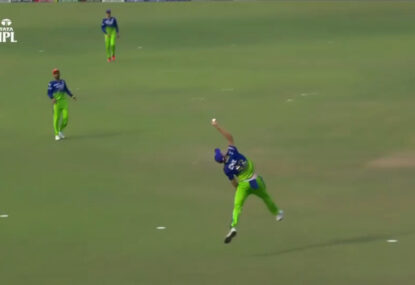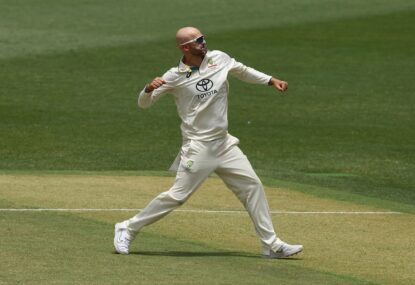Wow, what a Test series and what a great Australian summer of cricket.
A big congratulations to the world’s number one cricketing nation and a heartfelt thank you for providing us with an unforgettable summer of cricket.
And well done to Cricket Australia for reviving the cricketing calendar, I hope it is the shape of things for years to come. Too often in the recent past touring teams have had little time to acclimate themselves to the local conditions before being thrown in the deep end of a Test series.
But this summer the touring Indian side were in the country, through quarantine protocols, for a good fortnight before three ODIs and three T20s interspersed with a couple of four-day games against Australia A, a thorough preparation before the first Test of the summer.
Australia hit India with a one-two combination to take the one-day series, but India counter-punched to end the series a respectable 2-1.
In the T20 series the Indians landed their own one-two to take the series, with Australia saving face in the third game to go down 2-1. The touring games against Australia A were both drawn.
First Test – Adelaide Oval
The first Test in Adelaide was a cracking match. India won the toss and batted, scoring just 244 runs, which could have been many more had Ajinkya Rahane not burnt Virat Kohli with his call of “yes, no, sorry”.
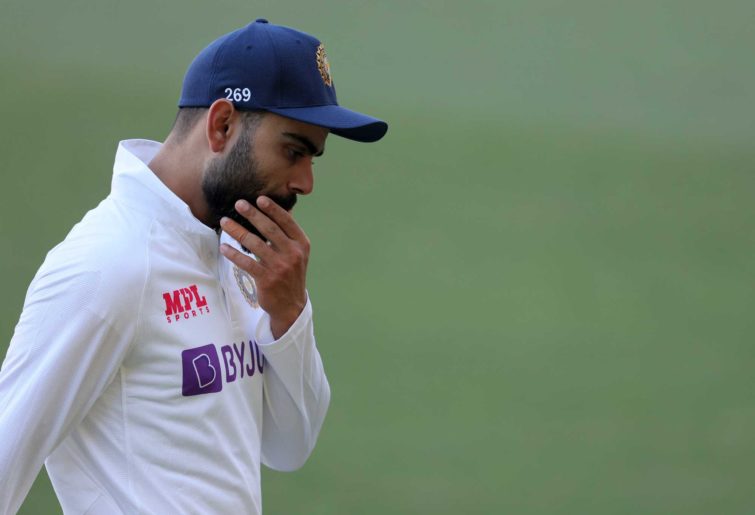
(Photo by Daniel Kalisz/Getty Images)
After India dismissed Australia for only 191, the match was beautifully poised heading into Day 3.
We were all looking forward to three late evenings on the couch watching this one unfold, but it wasn’t to be, snatched from us cruelly by devastating spells from Pat Cummins and Josh Hazlewood. Cummins finished the match with figures of 7-69 having torn through the Indian top order in their second dig.
After the match the world’s best player, Indian captain Virat Kohli, left the tour to be by his wife’s side for the impending birth of their baby girl, who was born on January 11, 2021.
With Kohli back at home and the touring team reeling from their second innings disaster in Adelaide, the traditional Melbourne Boxing Day Test looked a steep climb for the dizzy tourists. With India being given a standing count, Australia were poised to land what would surely be a decisive blow.
Second Test – MCG
With Australia winning the toss and batting, a fine bowling performance led by Jasprit Bumrah and Ravichandran Ashwin saw Australia rolled on Day 1 for 195.
The stage was now set for the debut of the emerging Punjabi superstar Shubman Gill, who made a breezy 45 from just 65 deliveries to steady India after Mayank Agarwal had fallen for a duck. A fine century by stand-in skipper Ajinkya Rahane and good support from Ravindra Jadeja gave India a 131-run first innings lead.
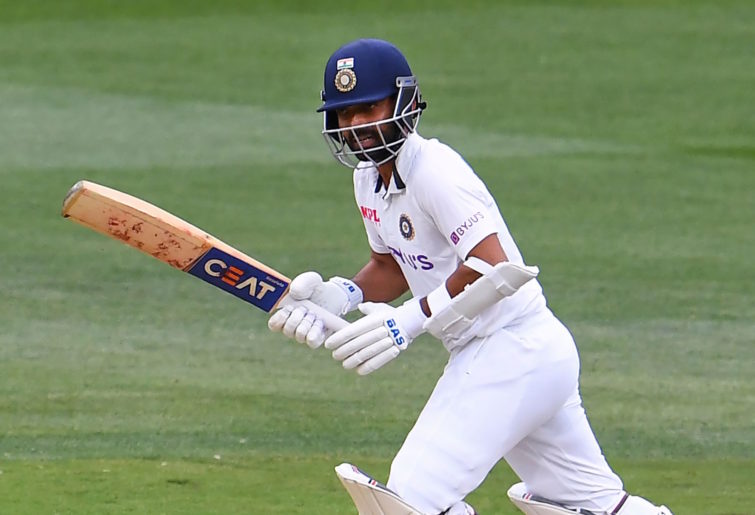
(Photo by William West/AFP via Getty Images)
Stern defence and a stirring rear guard action was required for the Aussies to get back in this fight, but instead they dropped their gloves, surrendering meekly for 200, as India romped home on the morning of Day 4 by eight wickets. Gill completed a good debut with 35 not out from just 36 balls.
The third Test at the batsmen’s paradise of the SCG would finally provide us with an even contest, and a full five days on the couch.
Third Test – SCG
Again winning the toss and batting, the Australians looked set to score an imposing total as Will Pucovski looked confident for his 62 on debut. Marnus Labushagne kept delivering the goods and the real Steve Smith turned up for the first time in the series.
Cruising at 2-206 the Aussies somehow capitulated to be all out for 338, with the middle and lower order offering no support to a rampant Smith, save for a brief cameo from Mitchell Starc.
The Indian first innings was steady with no real standouts as they eked out a total of 244. The Australian second innings was brisk enough with a good declaration setting India 407 with four sessions to play.
Shubman Gill and Rohit Sharma put on their second meaningful opening partnership of the match for 71 runs, but after they both fell late in the day, India were just about on the ropes at 2-98 at stumps, leaving the Aussie bowlers just eight wickets from victory with a full day to play.
When Rahane fell in the second over of Day 5, the writing was really on the wall. Unfortunately for Australia, the Wall was at the wicket and Cheteshwar Pujara blunted Australia’s attack yet again for 205 deliveries in a fine knock of 77 as part of a match-defining partnership of 148 with Rishabh Pant.
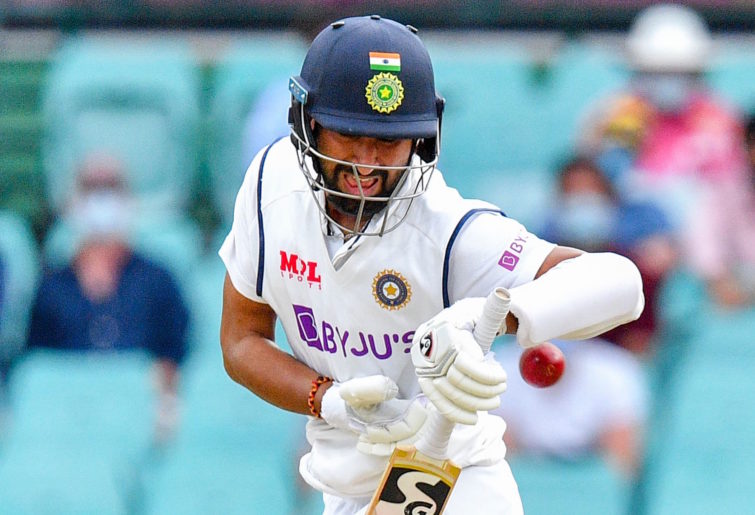
(Photo by Saeed KHAN / AFP via Getty Images)
That partnership ended when Pant agonisingly fell for 97 from just 118 balls after one of the greatest Day 5 counter punches in Test cricket history. Not only had the Indians given themselves a fighting chance of a draw, they now needed just 157 more runs with almost 52 overs left in the match, just about bang on three runs an over.
However, when Hanuma Vihari suffered a hamstring tear and could barley hobble, it all but put an end to the run chase. The ICC ruling not to allow runners in Test cricket took away what might have been an even more exciting climax to this match.
But history will tell us us that maybe this was just as well for the touring Indian side, for what we saw for the rest of the match was a stern and unflinching resistance from a one-legged Vihari and a brave Ravi Ashwin, who was sportingly invited to a special party at the Gabba with Tim Paine and all his friends. India drew the match, forcing the Australians into a winner-takes-all scenario at the Gabba, with India only requiring a draw to keep the trophy.
Fourth Test – Gabba
As perplexing as the first two Tests were, and as captivating as the third Test was, the final Test at the Gabba provided us with a Test match for the ages. It was one of the greatest David and Goliath battles in the history of the game. Now please don’t get me wrong, India are Goliathed by no-one in international cricket, but the context of this match was written by the brutal rate of attrition this tour had taken on the touring squad.
After the first Test India had lost their fine first-change bowler Mohammed Shami to a broken arm, they had dropped an opening batsman in Prithvi Shaw and their captain Virat Kohli had left the tour. From the second Test they lost an opening bowler in Umesh Yadav and dropped another opening batsman in Agarwal. The seemingly killer blows to their chances came after the third Test when they lost the leader of their attack Jasprit Bumrah, two legendary spin bowlers in Ashwin and Jadeja, and Day 5 batting hero Vihari all to injury.
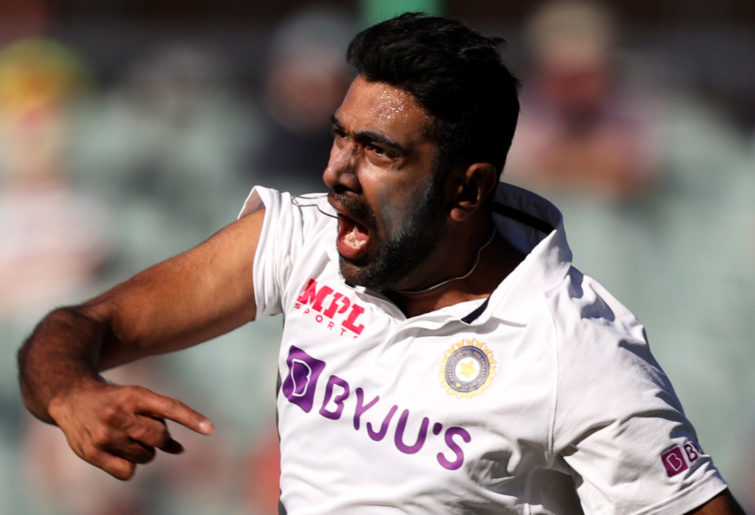
Ravichandran Ashwin (Photo by Peter Mundy/Speed Media/Icon Sportswire via Getty Images)
India went into the final Test at the Gabba with only three of their first 11 from the opening Test in Adelaide – Rahane, Pujara and the out-of-form Agarwal – now in the middle order. Their bowling ranks were decimated, every one of their attack from the first Test had succumbed to injury and the new leader of their attack was now two-Test veteran Mohammed Siraj. Their new bowling unit had only 13 Test wickets between them, and the chances of them taking ten Australian wickets on the Gabba with such an inexperienced attack looked forlorn. Their best chance to retain the trophy would be a dour draw, and to that end Cheteshwar Pujara remained the key.
Days 1-3
What happened in the final Test at the Gabba will go down in Test cricket folklore.
After the Australians again won the toss and batted, the usual demons of a first morning, first session Gabba pitch were not apparent. There was no moisture, little movement, true bounce and it was an absolute road. Both of the Australian openers failed for the umpteenth time in the series, but Australia recovered to 2-65 at lunch with Smith and Labuschagne looking well assured in the middle.
Steve Smith fell shortly after lunch but Labuschagne and Matthew Wade settled in and looked to be doing it easily. But with the score at 3-200, Wade played a rash shot yet again and skied the ball to be caught just short of his half century.
Soon after that, Labuschagne reached his ton, then inexplicably got ants in his pants, swinging wildly at three consecutive deliveries from Thangarasu Natarajan, skying the third one to the keeper Pant. Now at a tenuous 5-213, Cameron Green joined captain Paine at the wicket and they built a promising partnership of almost 100 runs before falling in quick succession, Paine for 50 and Green just shy of that milestone.
The trend of falling just before and after milestones, while not a new phenomenon, has becoming increasingly prevalent among the current crop of Aussie batsmen. The Aussies were dismissed for an underwhelming 369, and the Indian attack had performed admirably to share the spoils.
The Indians followed by putting together a less than convincing innings that was rescued by novice tail-enders Washington Sundar and Shardul Thakur, whose half centuries brought the Indian total to a respectable 336, keeping them in the match.
Day 4
Leading into Day 4 the big questions were how many will the Aussies set the Indians, how many runs will be enough, how many overs will we need and therefore when do we declare?
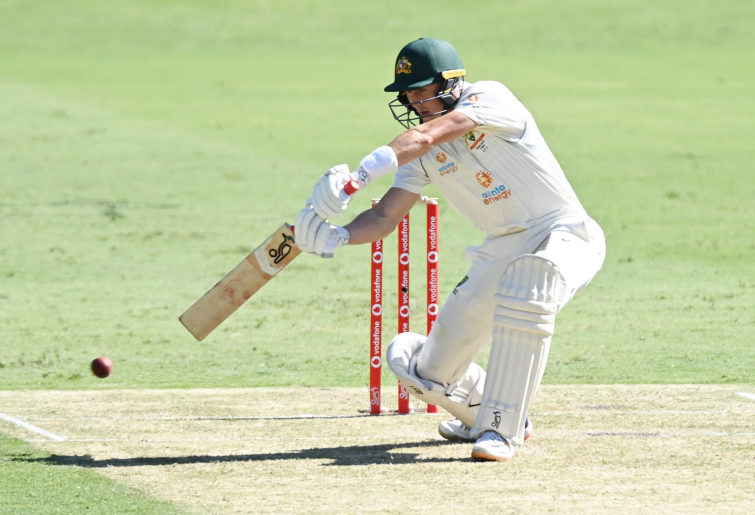
(Photo by Bradley Kanaris/Getty Images)
These decisions were taken out of the hands of the Australian brains trust as the Indian attack toiled manfully all day and led by an the impressive Mohammed Siraj they took regular wickets all day to roll the Australians for 294. That left India a target of 328 for victory.
The weather wiped out the final session of Day 4, setting up an all-or-nothing Day 5 for the Australian pace attack, who would have 96 overs to get the ten wickets required to win the match, the series, the Border-Gavaskar trophy and all but seal a place in the inaugural ICC Test championship final at Lord’s.
What happened on the final day of the series is the stuff of legend.
Day 5
Australia had a spring in its step after the dangerous Rohit Sharma was dismissed early on Day 5. Enter the Wall. Cheteshwar Pujara was the likely key to India batting deep into Day 5, in what I assumed would be their quest for a draw and retention of the prized trophy. Of course we now know that a draw was only the back-up plan.
India’s plan A was quite brilliant. The Wall would lock down one end, while the precocious shot makers would chase the total from the other. I must admit, I didn’t see it coming until the 46th over of the innings when Gill pulled Starc for six from the second ball of the over and followed it with two more consecutive boundaries. Pujara took four from the last ball of the over as Starc was carted for 20 runs. Up until this point India had scored at a rate of 2.37 runs per over and still required another 221 runs at more than four runs per over.
While Pujara was locking down one end and scoring the slowest half century of his brilliant career, tyro Shubman Gill continued playing his naturally free flowing strokes for a brisk 91 from 146 deliveries. But the key to the plan was still Pujara. His efforts to blunt and drain the Aussie quicks would create the opportunity for his teammates to play freely from the other end.
The Wall
Pujara showed grit and determination in buckets as the Australian quicks, spearheaded by spectacularly ferocious spells from Pat Cummins and then Josh Hazlewood, landed blow after blow to his head, hands, chest and arms. He was hit in the 33rd, 35th (twice) and 37th overs by Cummins. The most painful blows, to his upper arm and fingers in the 45th and 49th, came from Josh Hazlewood.
However the most controversial moment of the day came from the fifth ball of the 51st over of the innings. As Hazlewood approached the crease on his run up, Pujara backed away as a butterfly fluttered around his periphery. Hazlewood walked back to his mark, steamed in and spectacularly nailed Pujara point blank on his face grill, causing the stem guards to fly off the back of the helmet.

(Photo by Patrick HAMILTON / AFP)
Pujara barely flinched as Hazlewood continued down the pitch, eyeballed Pujara and enquired combatively “did you like that one?” Pujara didn’t say a word but met Hazlewood with an icy stare reminiscent of the king of the white walkers.
Pujara would battle away for another 30-odd overs for his before his epic innings ended to a dubious LBW decision by umpire Bruce Oxenford to a ball that hawk eye decided was clipping the far edge of the top of leg bail. Pujara had scored his last 45 runs from just 107 deliveries out of his innings of 56 runs from 211 balls, which saw India to within 101 runs of victory. An Indian defeat was now unlikely and a plucky Rishabh Pant, ably aided by an impressive Washington Sundar, blasted India to victory at a scoring rate just a tick under six runs an over to chase down the Australian tally with a leg in the air.
Rope a dope
India had pulled off a stunning victory. It was classic Test cricketing version of rope a dope, and it was meticulously executed. Pujara had absorbed blow after blow as the Aussie quicks punched themselves out, setting them up for a flurry of counter punches from Shubman Gill and the ferocious knockout blow late in Round 15 by Rishabh Pant.
India had won the series 2-1 and had humbled Australia in Australia for the second time in three summers, to defend the Border-Gavaskar trophy. They had secured their place in the inaugural ICC Test championship final to be played at Lord’s later this year and they had all but destroyed Australia’s chances of making that final, thus already have one hand on that trophy as well. Best of luck New Zealand, you’ll need it.
It was one of the greatest run chases in the history of Test cricket. It was the greatest team victory by any side in a long, long time and it handed the Australians their most humbling defeat in living memory.
Congratulations to Ajinkya Rahane, Ravi Shastri and the entire Indian touring party.
I will never forget the summer of Pant, Bumrah, Ashwin, Siraj, Jadeja, Rahane, Vihari, Kohli’s cameo, the emergence of Shubman Gill, Yadav, Thakur, Shami and Sharma. The list of contributors truly goes on.
And I will never forget the summer of the Wall.
Thank you India for a wonderful summer – we needed it.






































































































